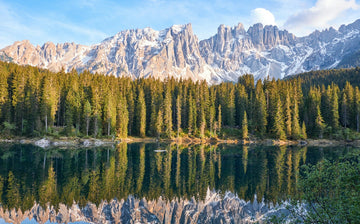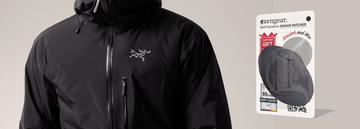Gear Up for Adventure: Essentials for Camping in Any Climate
by Emily Jannet on Mar 08, 2024
Camping is a timeless adventure that allows us to connect with nature, rejuvenate our spirits, and create lasting memories. For both seasoned outdoor enthusiasts and newcomers to camping, exploring diverse climates can unveil a fresh perspective on outdoor adventures. However, this activity requires careful consideration of gear and preparation to ensure a safe and enjoyable trip. In this guide, we'll discuss the essentials of camping in various climates, from the scorching heat of deserts to the frigid temperatures of snowy mountains.
Understanding Different Climates
Before embarking on your camping journey, it's crucial to familiarize yourself with the climate of your chosen destination. Climates can vary greatly depending on factors such as geographical location, elevation, and seasonality. Common climate classifications include:
Tropical: Characterized by warm temperatures, high humidity, and frequent rainfall. Tropical climates are often found near the equator and can include rainforests and coastal regions.
Desert: Known for extreme heat during the day and cold temperatures at night, with minimal precipitation. Deserts are dry environments that can be found in regions such as the southwestern United States and parts of Africa.
Temperate: Moderate temperatures with distinct seasons, including warm summers and cold winters. Temperate climates are common in many parts of the world, including Europe, North America, and parts of Asia.
Arctic/Subarctic: Extremely cold temperatures with long winters and short, cool summers. These climates are found in polar regions such as the Arctic Circle and northern Canada.
Essential Gear for Different Climates
Regardless of the climate, certain camping gear is essential for a safe and comfortable outdoor experience. However, specific gear requirements may vary depending on the climate you're camping in:
Shelter: A durable tent or hammock is essential for providing protection from the elements, including rain, wind, and insects. Choose a tent with adequate ventilation for hot climates or a four-season tent for cold temperatures and snow. In addition, pack a rain poncho.
Clothing: Layering is key for adapting to changing temperatures. In hot climates, lightweight and breathable clothing can help wick away sweat and prevent overheating. For cold climates, insulating layers such as thermal underwear and fleece jackets are essential for retaining body heat.
Sleeping Gear: Invest in a high-quality sleeping bag rated for the expected temperatures of your camping destination. In cold climates, a sleeping pad with insulation is essential for preventing heat loss from the ground.
Cooking Equipment: Portable stoves or campfires allow you to prepare hot meals and beverages, even in remote locations. Consider fuel availability and fire regulations when choosing your cooking equipment.
Hydration: Stay hydrated by bringing an ample supply of water or a water filtration system to purify natural water sources. In hot climates, electrolyte drinks can help replenish lost fluids and minerals through sweating.
Navigation: A reliable map, compass, or GPS device is essential for navigating unfamiliar terrain, especially in remote or mountainous regions. Familiarize yourself with the area's topography and potential hazards before setting out.
Safety Gear: Pack a first aid kit, emergency shelter, and signaling devices such as whistles or mirrors for unexpected situations. Sun protection, including sunscreen, sunglasses, and hats, is essential for preventing sunburn in hot climates.
Wildlife Precautions: Research potential wildlife encounters in your camping area and take appropriate precautions, such as storing food securely and avoiding confrontations with aggressive animals.
Preparing for Extreme Conditions
Camping in extreme climates requires additional preparation and specialized gear to ensure your safety and comfort.
Hot Climates: To beat the heat, camp in shaded areas and plan outdoor activities for early morning or late afternoon when temperatures are cooler. Wear lightweight and light-coloured clothing to reflect sunlight and stay hydrated by drinking plenty of water.
Cold Climates: Dress in layers to retain body heat and avoid sweating, which can lead to hypothermia. Insulate your tent with a snow skirt or snow walls to block cold drafts, and use a hot water bottle or heated rocks to warm your sleeping bag at night.
Wet Climates: Waterproof your gear with seam sealant, waterproofing spray, or tarps to prevent moisture from penetrating your tent or clothing. Choose quick-drying materials such as synthetic fabrics or wool to stay warm even when wet.
High Altitudes: Acclimate gradually to high altitudes to prevent altitude sickness, which can cause symptoms such as headaches, nausea, and fatigue. Stay hydrated, avoid alcohol and caffeine, and descend to lower elevations if symptoms persist.
Leave No Trace Principles
Regardless of the climate, practicing Leave No Trace principles is essential for minimizing your environmental impact and preserving natural ecosystems. Follow these guidelines to minimize your footprint while camping:
- Dispose of waste properly by packing out all trash and burying human waste in a cathole at least 6 to 8 inches deep.
- Camp on durable surfaces such as established campsites or bare ground to avoid damaging fragile vegetation.
- Respect wildlife by observing from a distance, storing food securely, and avoiding feeding or approaching wild animals.
- Minimize campfire impacts by using established fire rings or portable stoves, and always fully extinguish fires before leaving.
Camping in different climates offers a unique opportunity to experience the beauty and diversity of the natural world. By understanding the specific challenges and requirements of each climate, and preparing accordingly with the right gear and knowledge, you can enjoy safe and memorable outdoor adventures in any environment. Remember to respect nature, practice Leave No Trace principles, and always prioritize safety when exploring the great outdoors.





